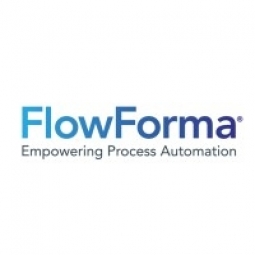公司规模
Large Corporate
地区
- America
- Europe
国家
- United States
- Ireland
- United Kingdom
产品
- FlowForma Process Automation
技术栈
- Microsoft Office 365
实施规模
- Enterprise-wide Deployment
影响指标
- Cost Savings
- Productivity Improvements
技术
- 平台即服务 (PaaS) - 应用开发平台
适用行业
- 电信
- 建筑与基础设施
适用功能
- 现场服务
- 质量保证
用例
- 远程资产管理
- 过程控制与优化
服务
- 云规划/设计/实施服务
- 培训
关于客户
Maverick Corporation 是一家提供全方位服务的基础设施工程和建筑公司,总部位于波士顿,在美国和欧洲设有办事处。该公司以其工作质量而自豪,尤其是在实施尖端技术方面。Maverick Corporation 的电信基础设施部门与多达 13 家承包商密切合作,在科罗拉多州和密歇根州推出 5G 网络。项目团队由 15 名成员组成,他们使用纸质表格和 Excel 来跟踪不同类型的工作和不同的工资率。
挑战
Maverick Corporation 是一家提供全方位服务的基础设施工程和建筑公司,在管理不同类型、不同薪资水平的工作时,其纸质流程和 Excel 面临挑战。该公司的电信基础设施部门与多达 13 家承包商合作,在科罗拉多州和密歇根州推出 5G 网络。偏远地区不利于纸质流程,导致文书工作处理不可避免地出现延误。该公司正在寻找一种数字解决方案来节省时间和金钱。
解决方案
Maverick Corporation 选择 FlowForma Process Automation 作为其业务流程自动化解决方案,因为它具有“无代码”的资质。简单的用户界面鼓励非技术人员开发“流程”。该公司构建了一份实地工作报告作为首批“流程”之一。这个由三部分组成的流程首先由分包商执行一份已完成任务的清单,然后将其交给 QC(质量控制)团队进行检查。如果任何一项不合格,表单的第二部分将触发后续工作,要么是向同一承包商,要么是向新承包商。现在可以使用智能手机或平板电脑以电子方式填写表格,还可以选择附加数码照片作为工作完成的证明。构建的第二个流程是工作安全表,这是及时处理 PPE(个人防护设备)分配以应对 COVID-19 的一种方式。目前还有八个流程正在筹备中。
运营影响
数量效益

Case Study missing?
Start adding your own!
Register with your work email and create a new case study profile for your business.
相关案例.

Case Study
IoT System for Tunnel Construction
The Zenitaka Corporation ('Zenitaka') has two major business areas: its architectural business focuses on structures such as government buildings, office buildings, and commercial facilities, while its civil engineering business is targeted at structures such as tunnels, bridges and dams. Within these areas, there presented two issues that have always persisted in regard to the construction of mountain tunnels. These issues are 'improving safety" and "reducing energy consumption". Mountain tunnels construction requires a massive amount of electricity. This is because there are many kinds of electrical equipment being used day and night, including construction machinery, construction lighting, and ventilating fan. Despite this, the amount of power consumption is generally not tightly managed. In many cases, the exact amount of power consumption is only ascertained when the bill from the power company becomes available. Sometimes, corporations install demand-monitoring equipment to help curb the maximum power demanded. However, even in these cases, the devices only allow the total volume of power consumption to be ascertained, or they may issue warnings to prevent the contracted volume of power from being exceeded. In order to tackle the issue of reducing power consumption, it was first necessary to obtain an accurate breakdown of how much power was being used in each particular area. In other words, we needed to be able to visualize the amount of power being consumed. Safety, was also not being managed very rigorously. Even now, tunnel construction sites often use a 'name label' system for managing entry into the work site. Specifically, red labels with white reverse sides that bear the workers' names on both sides are displayed at the tunnel work site entrance. The workers themselves then flip the name label to the appropriate side when entering or exiting from the work site to indicate whether or not they are working inside the tunnel at any given time. If a worker forgets to flip his or her name label when entering or exiting from the tunnel, management cannot be performed effectively. In order to tackle the challenges mentioned above, Zenitaka decided to build a system that could improve the safety of tunnel construction as well as reduce the amount of power consumed. In other words, this new system would facilitate a clear picture of which workers were working in each location at the mountain tunnel construction site, as well as which processes were being carried out at those respective locations at any given time. The system would maintain the safety of all workers while also carefully controlling the electrical equipment to reduce unnecessary power consumption. Having decided on the concept, our next concern was whether there existed any kind of robust hardware that would not break down at the construction work site, that could move freely in response to changes in the working environment, and that could accurately detect workers and vehicles using radio frequency identification (RFID). Given that this system would involve many components that were new to Zenitaka, we decided to enlist the cooperation of E.I.Sol Co., Ltd. ('E.I.Sol') as our joint development partner, as they had provided us with a highly practical proposal.

Case Study
Splunk Partnership Ties Together Big Data & IoT Services
Splunk was faced with the need to meet emerging customer demands for interfacing IoT projects to its suite of services. The company required an IoT partner that would be able to easily and quickly integrate with its Splunk Enterprise platform, rather than allocating development resources and time to building out an IoT interface and application platform.

Case Study
Bridge monitoring in Hamburg Port
Kattwyk Bridge is used for both rail and road transport, and it has played an important role in the Port of Hamburg since 1973. However, the increasing pressure from traffic requires a monitoring solution. The goal of the project is to assess in real-time the bridge's status and dynamic responses to traffic and lift processes.

Case Study
Bellas Landscaping
Leading landscaping firm serving central Illinois streamlines operations with Samsara’s real-time fleet tracking solution: • 30+ vehicle fleet includes International Terrastar dump trucks and flatbeds, medium- and light-duty pickups from Ford and Chevrolet. Winter fleet includes of snow plows and salters.









